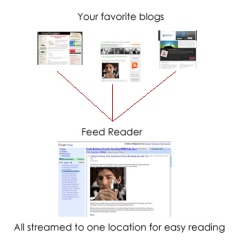Our group used many tools and technologies as we collaborated on this project. I enjoyed using Google Chat both video and text and Google docs to allow active communication with cohorts around the globe. We used Screenshare to show each other tools and how to accomplish tasks on the Google Presentation document and other tasks. One of my partners made a survey through Google Docs which allowed us to vote independent of each other and yet explore our results and our candid feedback on each option. I became quite comfortable with Zotero as I used it from the very beginning of this assignment. I wanted to keep tabs on the varying sites and be able to offer them quickly when we arrived at the assembly point. I became better through failure, though, as more than once I cleared my screen and had trouble locating documents I had previously retrieved. We also used mobile devices for texting and talking. WordPress, YouTube and Scribd were also used.
Working with peers is always challenging. Adding large time differentials, plus life events that all are experiencing make small obstacles larger. Time is a precious commodity and setting earlier time lines would always enhance a project. The Chinese government put additional strains on our group limiting Lydia’s access and searches throughout our research experience.
I think it pertinent to think how I might use what I have learned if given the opportunity to explore this at my next school. Regardless of the questions or research, you can utilize research teams to present findings to larger groups to help with problem solving on campus and in the classroom. Moving from that, you can also use small groups to work together on research projects within the curriculum or cross curriculum. Focusing specifically on the question of Digital Inequality, one can research the specifics that exist or obstruct Digital Inclusion on-campus with faculty, students and parents
My previous teaching experiences taught me that what is ethical and appropriate in one home is not in another. Just because I see great future in technology and the role it can play in a business, classroom or household does not mean everyone I contact will share those values. In the book Social, Ethical and Policy Implications of Information Technology (Brennan & Johnson, 2004) Disbenefits (sic) of Access are discussed at length. Are we reducing face-to-face interaction while touting sitting behind a screen for longer periods of time? Are people who work in skilled labor jobs really worse off for not accessing various sites online? When trying to research a community, sensitivity must be used by the researchers not to assume that with technology every life of every member of the community is going to be magically better. Flights can still be purchased off-line and business and personal transactions can still occur without the Information Superhighway running through one’s living room. The researcher must not judge those in the community and make assumptions. More importantly, the information gained in research must be respected and handled with care. Again, this is to protect those in the survey from feeling judged for their level of use of ICTs.
We used many integrated technologies in our project from animated slides in our presentation to embedding You Tube video to share concepts of inclusion. While building the project we utilized many different devices to coordinate and gather our research so I certainly see the alignment with 2.4 Integrated Technologies. Regarding 3.2 Diffusion of Innovations, once we made our decisions as to the order of alternatives, all our research and action went to addressing those items so the stakeholders would indeed accept, approve and act on our recommendations. All of our research focused on the 3.4 Policies and Regulations of the state of Idaho. We certainly wanted our project to have that validity. We attempted 4.2 Resource Management, though in the end, I am not sure how successful that went for us. That would require every hand on every oar. Those on deck rowed well.
We would have benefited from Backwards Planning (an old Army technique) where one looks at where you want to be and when you want to be there. You work backwards from there to determine needs, and available time to plan, rehearse, correct, rehearse again, and then, execute violently. But this is not the military and I have been in the civilian sector far longer than I was ever in service. Peer-group projects work well when all are focused on the common goal and common values are shared. I learned a great deal through this assignment, both about human dynamics and the specifics of Digital Inequality. Wanting to put this project into action at some point, the lessons learned will help keep me grounded as I move forward.
Please see the link below for our sources:
https://docs.google.com/document/pub?id=1jzQHeNGPRm86mAOymZhzTLNAaNIUADlVuyWaJ9UqL0o
0.000000
0.000000
